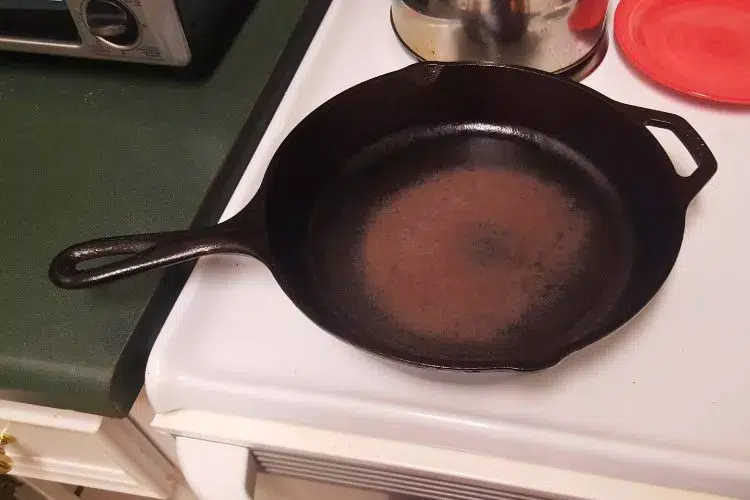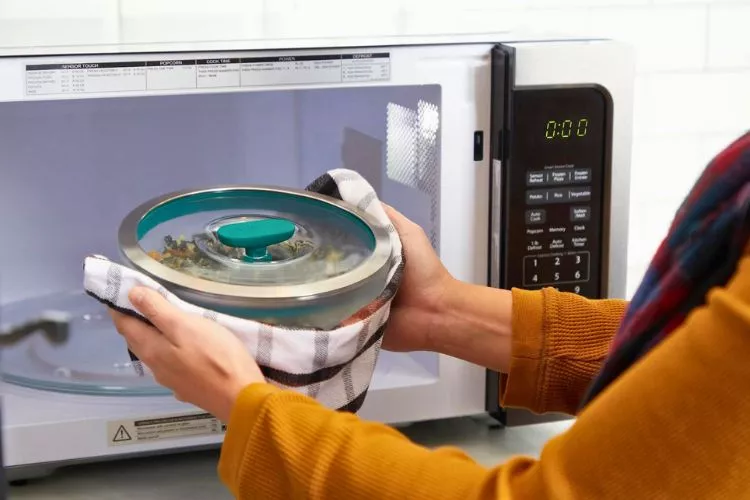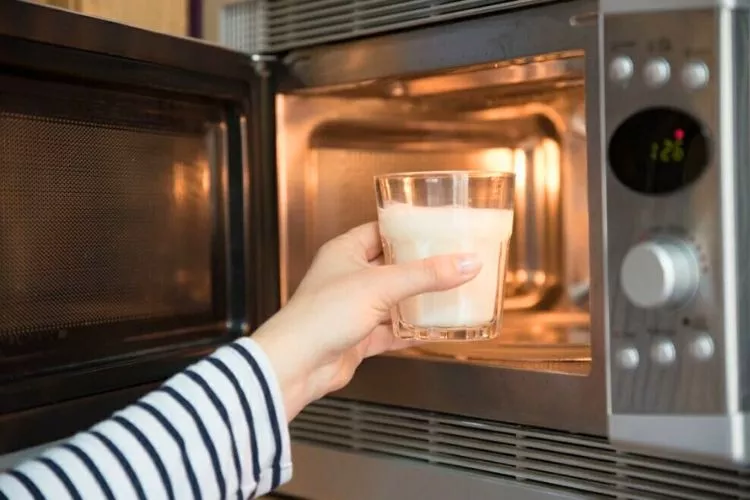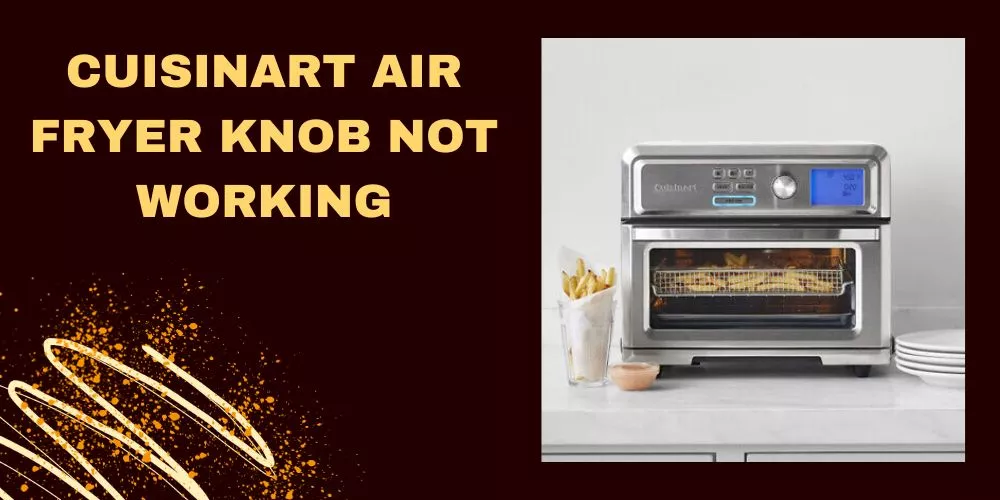Microwaves have become a must-have appliance in modern kitchens, offering a fast and convenient way to reheat and cook a variety of foods. But when it comes to microwave-safe materials, not everything makes the cut—especially cookware made of metal.
One common question that arises is: can you put cast iron in the microwave? While cast iron is prized for its durability and heat retention, it’s not safe for microwave use. Placing cast iron—or any metal—in a microwave can cause sparks, damage the appliance, or even start a fire.
In this article, we’ll explain why cast iron and microwaves don’t mix, the science behind microwave heating, the dangers of using metal in a microwave, and safer alternatives for heating your meals.
Whether you’re new to cast iron or simply curious, this guide will help you avoid common mistakes and protect your cookware—and your kitchen.
Microwaves have become an essential appliance in modern kitchens, offering a quick and convenient way to heat and cook food.
However, not all materials are suitable for use in a microwave, and using the wrong type of cookware can lead to damage or even dangerous situations.
One such material that raises questions is cast iron. So, can you put cast iron in the microwave?
In short, you can’t put cast iron in the microwave, because it may cause a fire or damage it. As we know microwaves use electromagnetic waves to heat food, so placing metal objects like cast iron on top of it isn’t recommended.
In this article, I will explore whether or not it is safe to put cast iron in the microwave, discuss the potential risks and consequences, and provide alternative methods for heating and cooking with cast iron cookware.

Quick Recommendations
Last update on 2025-10-25 / Affiliate links / Images from Amazon Product Advertising API
Can you put cast iron in the microwave?
No, you cannot put cast iron in the microwave. Microwaves use electromagnetic waves to heat food, and placing metal objects like cast iron cookware inside can cause a fire or damage the microwave.
Cast iron can also block microwaves from reaching the food, resulting in uneven cooking.
Additionally, the heat generated by the metal can cause the cast iron to become extremely hot, posing a burn risk when removing it from the microwave. To ensure safety and proper cooking, use microwave-safe glass, ceramic, or plastic containers instead.
What happens to cast iron when heated?
When cast iron is heated, the kinetic energy of its atoms increases, causing them to move more and take up more space, resulting in the material expanding.
Cast iron is an excellent conductor of heat and can maintain high temperatures for long periods, promoting even cooking.

Heating the metal displaces atoms from their position, and the displaced atoms form a new structure through allotropic phase transformation, which alters the metal’s hardness, strength, and flexibility.
How do you know if a material is microwave safe?
To determine if a material is microwave safe, follow these steps:
- Look for microwave-friendly labels or symbols on the container. Manufacturers must add labels indicating if they are safe for microwave use.
- Perform a water test: Fill a glass measuring cup or bowl with 1 cup. Place both the cup of water and the container in the microwave. For larger containers, place the cup of water on the side. Heat the items for 1 minute. If the container is cool or slightly warm and the water is hot, the container is likely microwave-safe.
Always exercise caution and use microwave-safe glass, ceramic, or plastic containers to ensure safety and proper cooking.
What can you not put in a microwave?
Microwaves are convenient and efficient appliances, but not all materials are safe to use in them. This guide will help you understand which items should not be placed in a microwave.

Aluminum Foil
Aluminum foil can cause arcing, which occurs when electric currents flow through the metal and create sparks, potentially starting a fire. Additionally, aluminum foil can block microwaves from reaching the food, resulting in uneven cooking.
Metal Cookware
Metal pots, pans, and utensils can cause sparks when exposed to microwaves, damaging the microwave’s interior and potentially starting a fire.
Metal cookware can also reflect microwaves, preventing even cooking and potentially causing damage to the microwave’s magnetron.
Metal Twist Ties
Metal twist ties, commonly used to seal plastic bags, can also cause arcing and are a fire hazard. The thin metal wires can easily heat up and ignite, posing a risk to the microwave and its surroundings.

Non-Microwave-Safe Plastic
Some plastics can release harmful chemicals, such as BPA and phthalates when heated. These chemicals can leach into your food, causing potential health risks. Always look for microwave-safe labels on containers to ensure they are safe.
Plastic Bags
Plastic bags can melt when heated in a microwave, releasing chemicals into your food. Melted plastic can also stick to the microwave’s interior, making cleaning difficult.
Styrofoam
Styrofoam, or polystyrene foam, can melt and release harmful chemicals like styrene when heated in a microwave. These chemicals can leach into your food and pose health risks. Use microwave-safe alternatives like glass or ceramic containers instead.
Non-Heat-Resistant Glass
Non-heat-resistant glass can shatter or crack due to thermal stress when heated in a microwave. This can pose a safety risk and damage the microwave. Use heat-resistant or microwave-safe glassware to avoid this issue.
Cold Glassware
Sudden temperature changes can cause the glass to break or shatter. If you’re storing glassware in a cold place, let it warm to room temperature before placing it in the microwave to avoid breakage.

Cracked Ceramics
Cracked ceramics can break or shatter in the microwave due to uneven heating and the expansion of existing cracks. This can cause a mess and pose a safety hazard. Always inspect your ceramics for cracks or damage before using them in the microwave.
frequently asked questions (fAQs)
u003cstrongu003eWhich material is the least safe to put in a microwave?u003c/strongu003e
The least safe material in a microwave is metal, which can cause arcing and potentially start a fire.
u003cstrongu003eWhich food containers are not safe for the microwave?u003c/strongu003e
Food containers unsafe for the microwave include non-microwave-safe plastics, which can release harmful chemicals when heated, and Styrofoam, which can melt and release harmful chemicals.
u003cstrongu003eWhat 3 kinds of containers are safe to put into the microwave?u003c/strongu003e
Three kinds of containers that are safe to put into the microwave are:u003cbru003eMicrowave-safe plastic containers are designed to withstand microwave heat without releasing harmful chemicals.u003cbru003eGlass containers are generally microwave-safe and do not release harmful chemicals.u003cbru003eCeramic containers are microwave-safe and do not release harmful chemicals.
Conclusion:
Placing cast iron cookware in the microwave is not recommended due to the potential risks and damage it can cause. Cast iron, a type of metal, can cause arcing, sparks, and even fires when exposed to microwave radiation.
Furthermore, cast iron in the microwave can result in uneven cooking and damage the appliance’s internal components.
To ensure safe and efficient cooking, it is essential to use microwave-safe materials such as glass, ceramic, and microwave-safe plastic containers.
By avoiding the use of cast iron and other unsuitable materials in the microwave, you can protect your appliance and cookware and, most importantly, ensure the safety of your kitchen and home.





